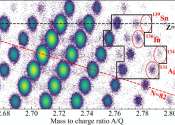Scientists discover rare element in exoplanet's atmosphere
The rare metal terbium has been found in an exoplanet's atmosphere for the first time. The researchers at Lund University in Sweden have also developed a new method for analyzing exoplanets, making it possible to study them ...









